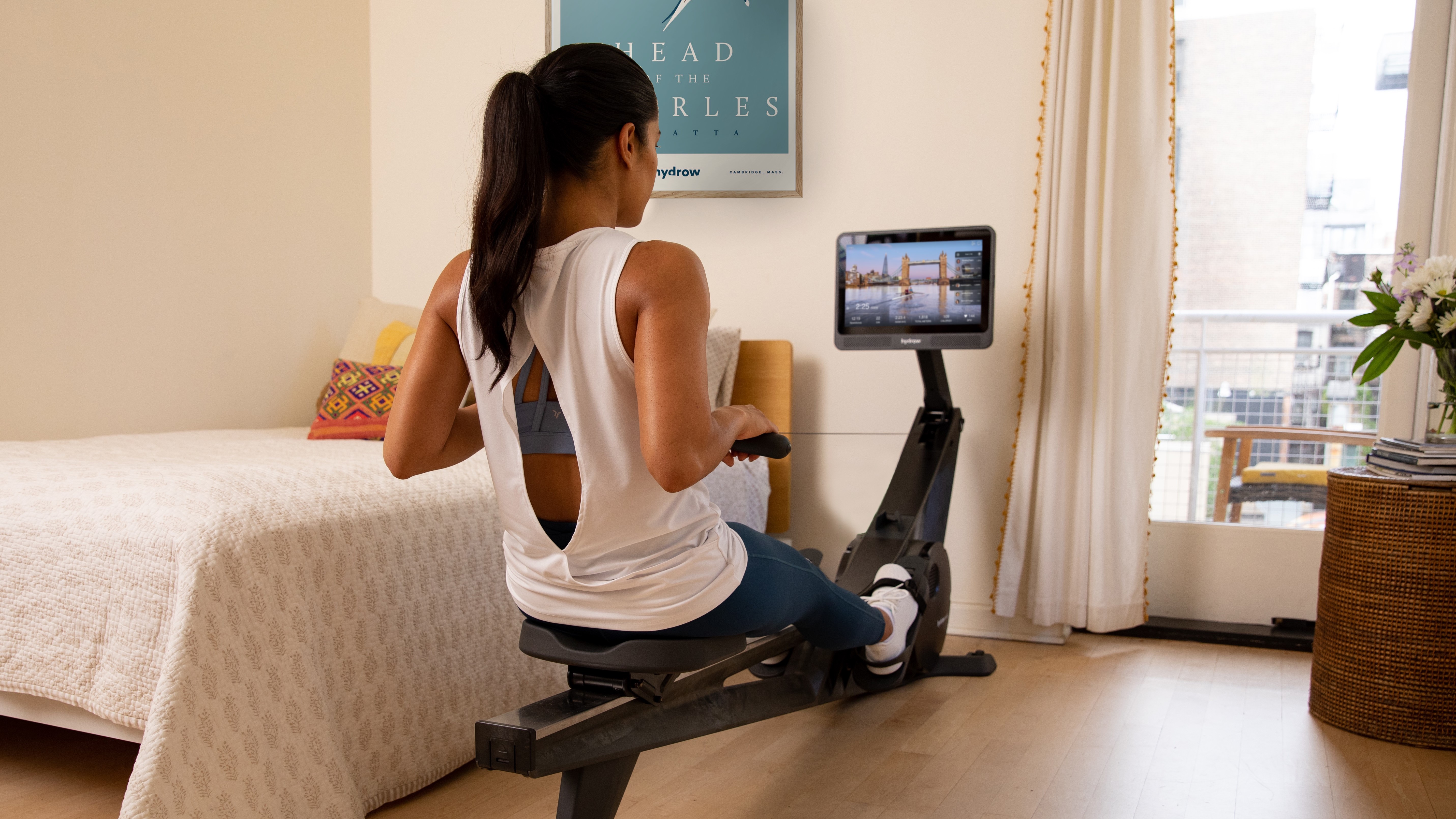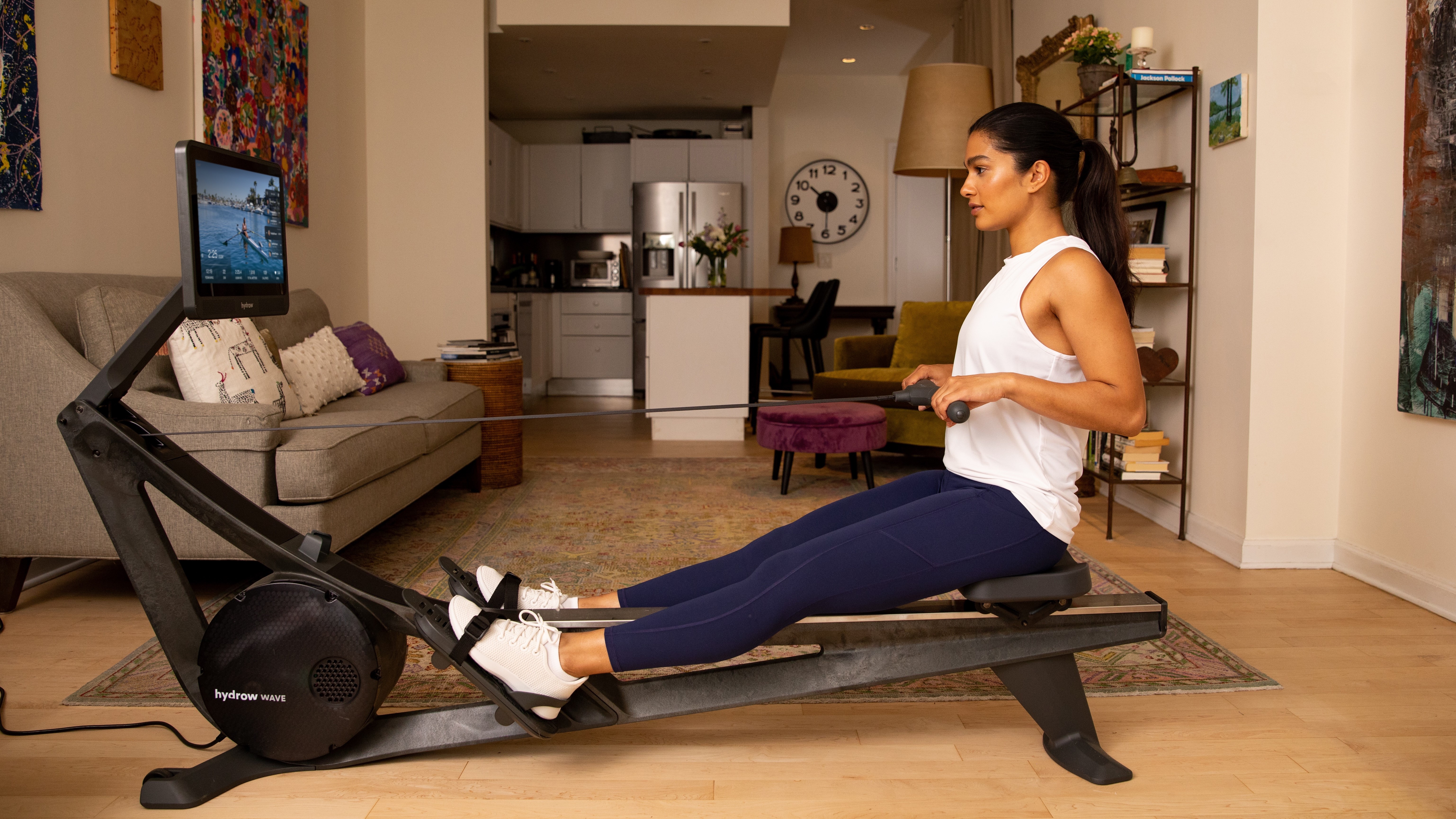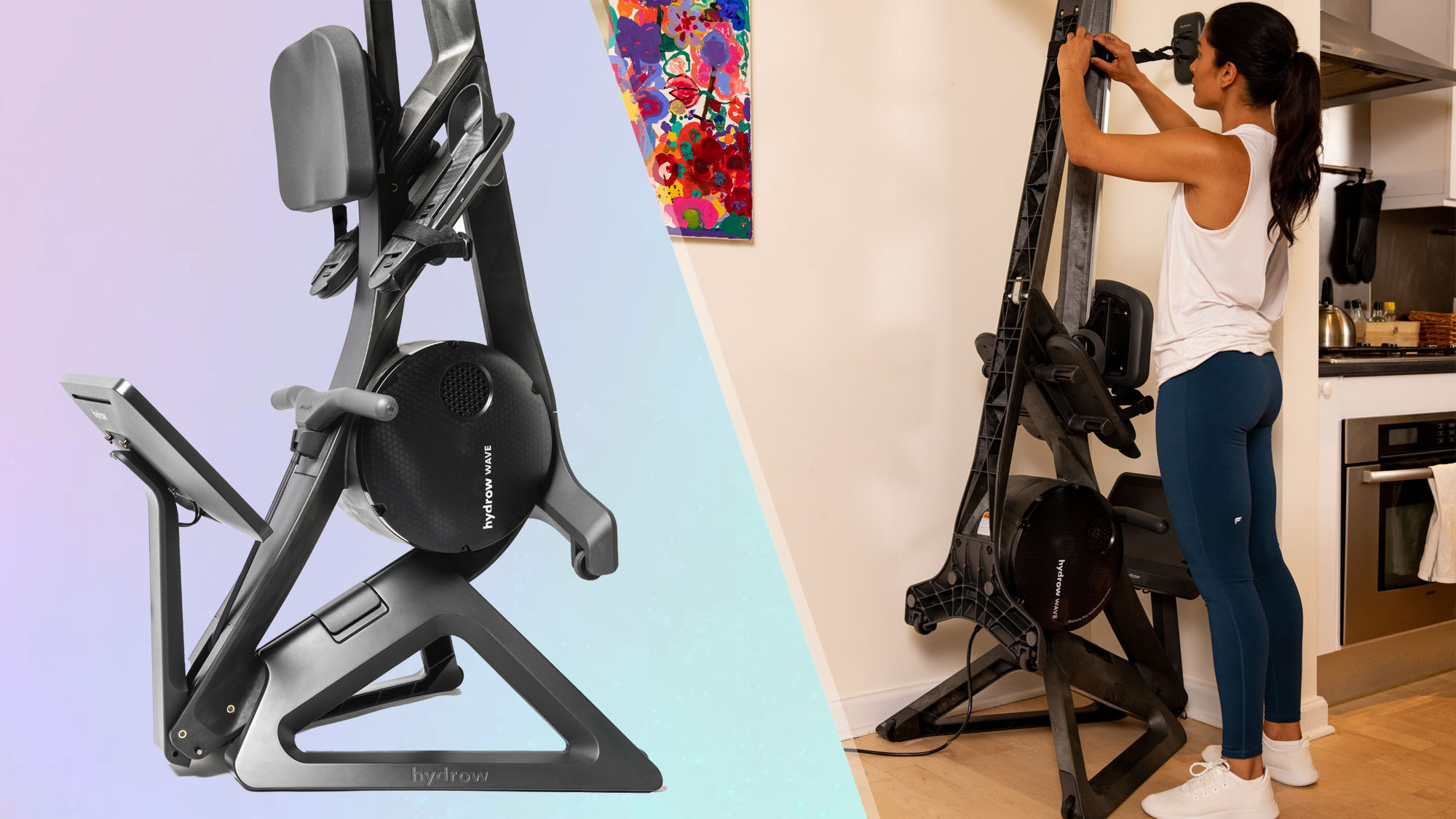I was one of the first people to see the Hydrow Wave — and I’m impressed

While the original Hydrow Rower is a seriously impressive piece of kit, its large footprint makes it unsuitable for anyone who lacks the space for a dedicated gym area. Enter the Hydrow Wave.
Hydrow’s new machine is not just smaller than the original — to the extent that it can even be delivered through the mail — but is also cheaper. As one of the first people to see the Wave, I was impressed at how little space it took up and by its functionality.
Intrigued? Read on to find out more about the new rowing machine, plus, if you’re thinking of adding one to your home, be sure to check out our guide to using a rowing machine, the benefits, and the workouts to try.
Hydrow Wave: Price, specs, and availability
The Hydrow Wave costs $1,495 and will be available from Hydrow, Best Buy, and at select Fabletics stores in July. You’ll still need to pay the monthly Hydrow membership fee, which is $38 per month for the live and on-demand classes, but the new rower is $1,000 cheaper than the original machine.
Footprint-wise, the Wave is 80 inches long, 19 inches wide, and 43 inches deep. The average Queen bed is 80 inches long, and a three-seater couch is around 90 inches. Indeed, in the New York City apartment where I tried it, the rower was about the same length as the couch it sat behind. The rower can also be folded up against the wall, but you’ll need to purchase an extra attachment.
It weighs 102 pounds, which is 30% less than the original Rower, and is light enough to be sent through the mail.
The Hydrow Wave has a 16-inch HD screen for viewing the classes, built-in speakers, and can pair to your headphones and heart-rate monitor via Bluetooth. The Wave fits up to a 36-inch inseam and has a max user weight of 375 pounds.
Get instant access to breaking news, the hottest reviews, great deals and helpful tips.

Hydrow Wave: What’s new?
As well as being smaller and cheaper than the original Rower, the Wave shares some of the best features of the more expensive machine. For instance, it uses the same patented computer-controlled dynamic resistance to mimic the feel of rowing on water, as well as the same electromagnetic braking, polyester webbing, and spring assembly that makes rowing on the machine smooth and as silent as possible.
While I wasn’t able to unfold the machine and row on it myself, in the demo it was impressively quiet — you could easily go for a row when the kids were asleep, without waking the household.
However, while the screen on the Hydro Rower could pivot 25 degrees left and right — which was handy if you were taking strength classes next to the machine — the Wave's display is fixed. You’ll also need to purchase an extra attachment should you want to stand the rower up when you’re not using it.
“Our goal for Hydrow from the very beginning has been to democratize the sport of rowing, and make it universally accessible for people everywhere,” says Bruce Smith, Founder & CEO, Hydrow, Inc.
"We know that two of the most significant barriers for entry are cost and space in the home. We’ve worked tirelessly to create an even more accessible, lighter rower that will fit seamlessly into people’s lives. The Hydrow Wave will allow us to share the truly special experience of on-water rowing with even more people around the world.”

Hydrow Wave: Outlook
Of course, it’s impossible to draw a true conclusion without having the Wave installed in my home for a longer test, but my first impression is that this will be a game-changer in the connected fitness market.
Companies such as Hydrow boomed during the coronavirus pandemic, but with many people returning to the gym, this seems like a good time for brands to stop and think about what their consumers really need. I don’t know anyone who has the funds or square footage to build a home gym, so I can anticipate many wannabe rowers appreciating the arrival of affordable equipment that doesn’t take up so much space.
Sure, you’ll still need to pay a monthly subscription, but the main draw of buying a Hydrow rower is the instruction through the classes. It’ll be interesting to see how it compares to the Peloton Rower, which was announced last month and which is likely to hit the market later this year.

Jane McGuire is Tom's Guide's Fitness editor, which means she looks after everything fitness related - from running gear to yoga mats. An avid runner, Jane has tested and reviewed fitness products for the past five years, so knows what to look for when finding a good running watch or a pair of shorts with pockets big enough for your smartphone. When she's not pounding the pavements, you'll find Jane striding round the Surrey Hills, taking far too many photos of her puppy.
